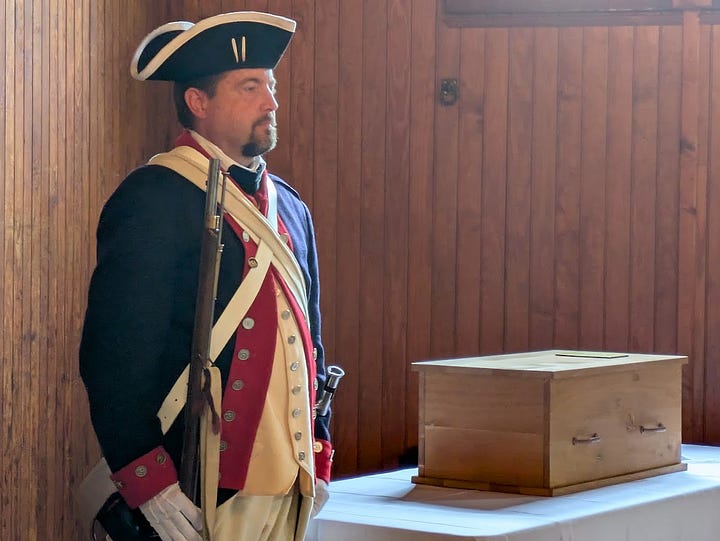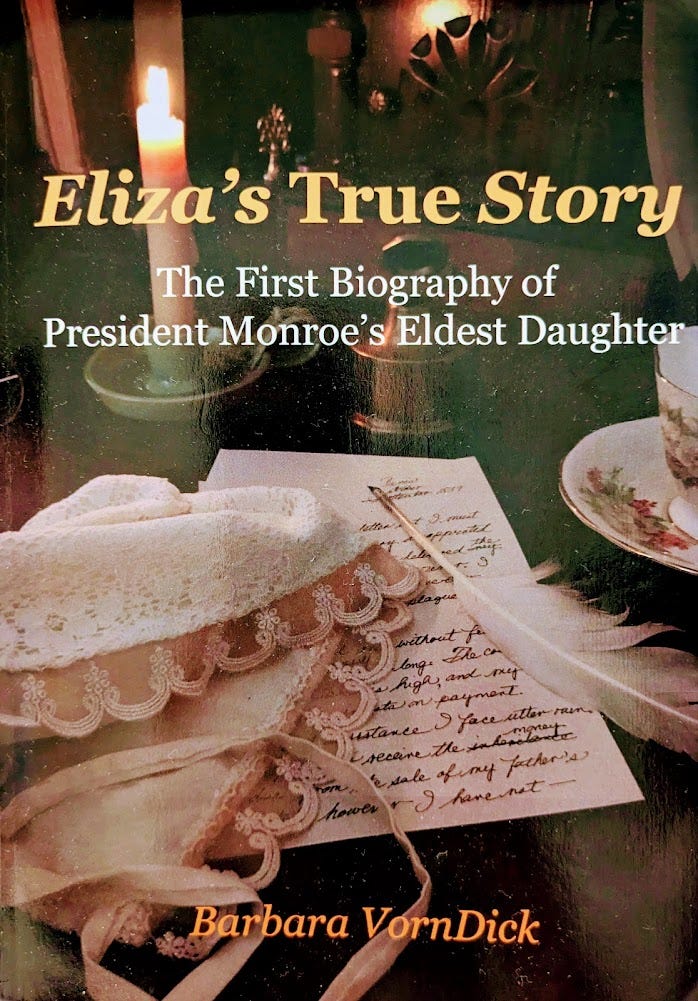A President's Daughter Returns Home
A years-long effort to repatriate Eliza Monroe Hay, and repair her reputation, culminated last week.
By Adele Uphaus
MANAGING EDITOR AND CORRESPONDENT
Email Adele


One hundred and forty-five years after she died impoverished and alone in Paris and was buried in an unmarked grave, Eliza Monroe Hay—the older daughter of fifth U.S. president James Monroe—is home.
Last week Friday, Eliza’s remains were welcomed back to the U.S. in a ceremony held at Oatlands, a federal-era home in Loudoun County. Following the ceremony, the coffin was transported to Oak Hill, the Loudoun home of Monroe and his family after his second presidential term.
Kathryn Willis, a local historian and arts advocate who worked with principal researcher Barbara VornDick on the repatriation effort, said Eliza will be reinterred in Richmond’s Hollywood Cemetery with her father, mother, and younger sister on October 23.
VornDick was an interpreter at Highland, Monroe’s home near Charlottesville. She told the Advance earlier this year that she was always interested in the Monroe women—Monroe’s wife, Elizabeth Kortright Monroe, and his two daughters, Maria Hester Monroe Gouverneur and Eliza, who was 15 years older than her sister.
Eliza was born in Fredericksburg in 1786 and spent much of her childhood in France, where Monroe was stationed as the American minister. She was fluent in French when she returned to the U.S. in 1803 with her family. She married an attorney, George Hay, and had a daughter, Hortensia, as well as three granddaughters.
When Monroe was elected president in 1817, Eliza acted as First Lady, since her mother was ill.
Eliza’s husband and her mother died in 1830 and her father in 1831. She moved back to Paris in the late 1830s, died there in 1840, and was buried in Pere Lachaise Cemetery.
The picture of Eliza that has come down through the years is that Washington society considered her to be a snob and that she was a Francophile who left her country behind to spend her last years in Paris.


But for VornDick, this accepted narrative just didn’t make sense, and she was inspired to find out more.
“I’m a grandmother, and you couldn’t pay me enough to go away and leave my family, especially my grandchildren,” she told the Advance in January.
VornDick went to primary sources to build a more complete picture of Eliza. She learned that Eliza never received her share of the inheritance that her father willed to her and that she had no possessions to her name at the time of her death.
VornDick also uncovered numerous examples of Eliza’s kindness and sense of duty. Notably, Eliza was the one to fulfill one of her father’s dying wishes—manumission of his enslaved manservant, Peter Marks.
“I have come to the conclusion that Eliza was an intelligent, caring woman, who had ideas and spoke them, and who rose to the occasion and got things done. Those are qualities we would admire in a woman today, but in the 1800s, when women were supposed to be demure, she was branded as obstinate,” she said.
VornDick wrote a book about what she learned—Eliza’s True Story: The First Biography of President’s Monroe’s Eldest Daughter—which was published last year. She also connected with Willis and together the two women worked to have Eliza repatriated, an effort that came to fruition last week.
During Friday’s ceremony, pallbearers—including one of Eliza’s direct descendants, Michael Kamtman—presented her coffin, accompanied by a Sons of the American Revolution Color Guard.
Kamtman, who is assistant professor of theater and dance at Wake Forest University in Winston-Salem, called the moment “beautiful and powerful” and credited VornDick for initiating the research that led to the repatriation.
“This … is possible because of someone who up until two years ago was a complete stranger. I’m referring, of course, to Barbara VornDick … Thank you, Barbara,” Kamtman said, according to a press release about last week’s event. “At this moment, I am filled with gratitude to say again, ‘Welcome home, Grandmother Eliza.’”
Also at the ceremony, Jay Harrison III, who interprets Monroe at the James Monroe Museum here in Fredericksburg, read excerpts of a letter from the president to his daughter, in which he expressed his love and admiration for her.
State Senator Bryce Reeves, a supporter of the repatriation effort, also spoke at the event and praised VornDick for her research, stating that Eliza’s repatriation is “the most important event for women’s history in the Commonwealth since the unveiling of the Virginia Women’s Monument in Richmond.”
The effort was supported through the pro bono services of Anubis International Assistance, which exhumed and transported Eliza’s remains from Paris to Dulles airport; Historic Fredericksburg Foundation, Inc., which receives donations to the Eliza project under its non-profit status; and Found & Sons Funeral Chapels and Cremation Service, which received the coffin and transported and stored Eliza’s remains.
Members of the Bringing Eliza Home Project include VornDick, chair; Maureen Goonan, financial manager; Sue Henderson, Community and Public Relations; and Kathryn Willis, Communications and Fundraising.
More information may be found at hffi.org/bringing-eliza-home.
Support the Advance with an Annual Subscription or Make a One-time Donation
The Advance has developed a reputation for fearless journalism. Our team delivers well-researched local stories, detailed analysis of the events that are shaping our region, and a forum for robust, informed discussion about current issues.
We need your help to do this work, and there are two ways you can support this work.
Sign up for annual, renewable subscription.
Make a one-time donation of any amount.
Local Obituaries
To view local obituaries or to send a note to family and loved ones, please visit the link that follows.
This article is published under Creative Commons license CC BY-NC-ND. It can be distributed for noncommercial purposes and must include the following: “Published with permission by FXBG Advance.”












